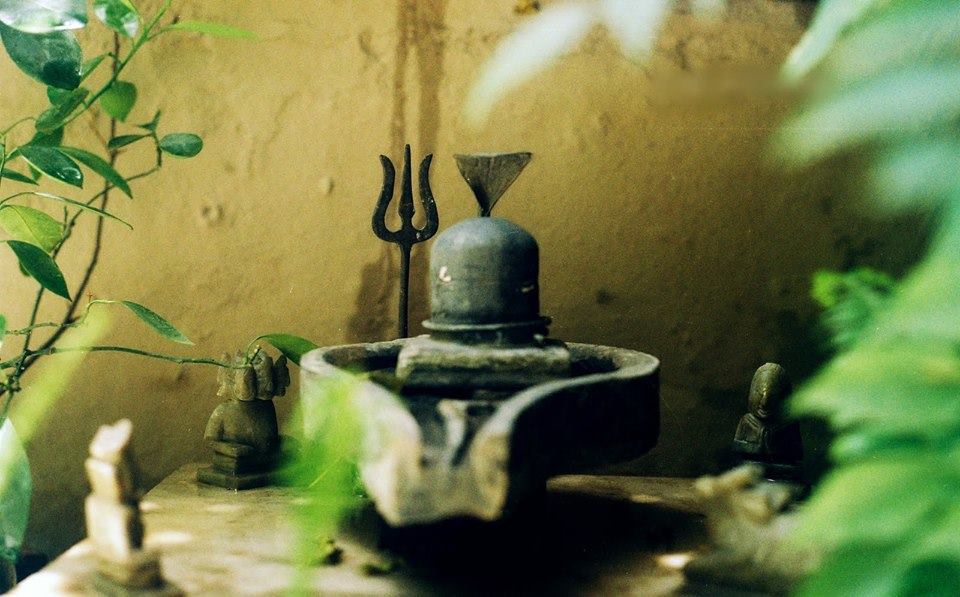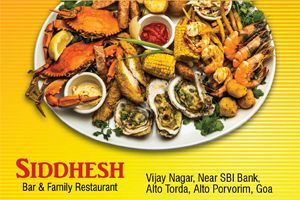Shravan month during the Chaturmas is the most awaited time of the year for Hindu people. It is said that the Shravan Nakshatra (lunar mansion in Hindu astrology) is the strongest, and is beneficial throughout this month. The nature is at its richest and greenest with all the hues of life.
Soon after the Ashadi Amavsya there is a spread of greenery and a godly glow on to the land, rivers and the skies. This signifies the beginning of the auspicious Shravan month and every day of the month signifies importance of not just the four elements of earth but also reveres what comes from these elements.
Goa has always been a mix of cultural and religious ethnicity. However, one thing that has remained constant in the state through the ages is the cultural and spiritual wealth which people long to see elsewhere. Goa is gifted with abundant natural cover and wealth, and obviously the month of Shravan changes the face of Goa entirely.
The most important day for Goans, and especially Madgaonkars, in Shravan, is the Shravani Somaar, the day of Lord Daambaab. One won’t see many lord Mahadev temples in Goa because the lord of lords has his incarnations in the state in the form of Damodar, Chandreshwar, Ravalnath and several others.
The Damodar temple in Zambaulim and the Chandreshwar Devasthan in Paroda, in particular, receives lakhs of devotees on all the Shravani Somaars.
Every Mahadev temple in Margao, like Damodar Ped in Margao Market, Damodar Linga in Fatorda and Damodar Sal in Margao city, have loads of programmes lined up for the entire month and have special Bhajans and Kirtans all day.
The Damodar Sal, every year on the first Monday of Shravan, holds a non-stop Bhajan for 12 hours in the temple premises. The Bhajan is conducted by locals from Comba Margao.
Pooja of Shivalinga and Abhishek is considered to be auspicious. Mythology has it that the people who have prayed to Lord Shiva have got their wishes fulfilled always as it is believed that Lord Shiva is a Bhola (humble) and listens to the prayers of his devotees. Abhishek and Pooja are two of the many methods by which Lord Mahadev is revered.
The Damodar Devasthan and Chandreshwar Devasthan serve delicious Mahaprasad foods to its devotees. One needs to be very lucky to get food at the Zambaulim temple as 1000’s of devotees wait for their turn to sit on the ground and taste the delicious Panchpakwana food. The Zambaulim temple also serves the best sweet on the platter.
It can also be observed that there is no caste, creed, religion or sect barrier for praying to lord Daambaab, and Madgaonkaars, be it Hindu, Muslims or even Christians, come to the temples to offer prayers.
The Damodar linga in Fatorda, the Ped in Margao, and Zambaulim temple, sees a surge of devotees who buy new vehicles during Shravan, come to offer prayers at the temples. Never does a Madgaonkaar start travelling in his new car or on his new bike without showing it to his lord Daambaab. Blowing horn, flashing light and breaking a coconut are rituals which are considered to be safety cover by the devotees, and say that lord protects them from any bad incidents.
The Damodar temple in Vasco though has the grandest celebration of all during Shravan. In Vasco, the seven-day event which begins a day after the Nagpanchami at the Damodar temple is called Saptah. The Saptah is one of the largest fairs in Goa which gathers along the road, from the temple to the taxi stand. People come here from all over the state to watch the glittering ceremonies, particularly the ‘pars’ or decorated tableaux coming from various wards. There is always a cultural programme in which well-known artists from the state as well as country come to perform.
The story behind Saptah is also interesting. In 1896, when people began dying due to an epidemic that broke out in Vasco, the locals turned to lord Damodar for help. A sacred coconut, which was installed at Vasco as a divine symbol to be worshiped, was brought from the famous Damodar temple at Zambaulim (22km from Margao). The epidemic abated as their devotion bore fruit. The residence of a leading citizen was donated to install an idol of lord Damodar. Even now, this small temple attached to the original house is the main venue during the celebration.
The festival begins at the Old Mata High School with prayers being offered. Before being immersed in the sea, the last year’s coconut is taken out in the procession which is followed by a troupe of dancers as it visits Vasco’s prominent citizens.
The devotees return to the temple after the immersion ceremony, and while singing devotional songs which continue non-stop for 24 hours, the new coconut is anointed. There is a parade of tableaux in the night and, during the entire week, culture and religious programmes are held. The vendors along the roads and streets of Vasco put up stalls, selling everything from toys to clothes. The best time to visit the temple is on any Monday or Thursday at around 9 pm when lamps are lit and devotional songs are sung.
Team TNV



























